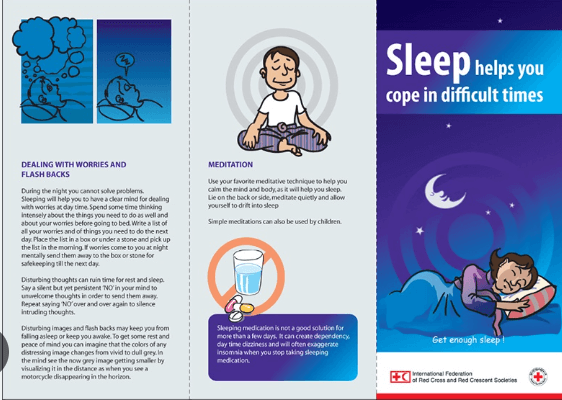Do you ever experience a gritty or burning sensation in your eyes? Or perhaps they feel dry and itchy, making it difficult to focus on anything for an extended period of time. These symptoms are common indicators of dry eye syndrome, a condition that affects millions of people each year. Whether you’re someone who spends hours staring at computer screens or suffer from allergies, there are many reasons why dry eye can occur. In this article, we’ll discuss 5 things you need to know about this frustrating condition and how visiting “my eye doctor” could help alleviate your discomfort.
What is dry eye?
Dry eye is a condition that occurs when your eyes don’t produce enough tears, or the quality of your tears is poor. Tears are vital for maintaining healthy eyes as they help to keep them lubricated and protect them from infections. When you have dry eye syndrome, this protective layer over the surface of your eyes becomes compromised.
There are two types of dry eye: aqueous tear-deficient and evaporative. Aqueous deficiency happens when you don’t produce enough watery tears, while evaporative dryness results from an imbalance in the oils that make up your tears.
Symptoms can vary between individuals but typically include redness, burning sensations, itchy or gritty feelings in the eyes and blurry vision. Those who wear contact lenses may find their lenses feel uncomfortable or irritate their eyes more than usual.
Dry eye can be caused by various factors such as environmental conditions (dry air), aging, hormonal changes (menopause), certain medications (antihistamines) and medical conditions like rheumatoid arthritis or diabetes.
If left untreated, chronic dry eye could lead to damage to the cornea and increase susceptibility to infections. It’s important to seek advice from “my eye doctor” if symptoms persist for proper diagnosis and treatment options.
What are the symptoms of dry eye?
Dry eye is a common condition that affects millions of people worldwide. It occurs when the eyes are unable to produce sufficient tears, or when the quality of tears produced is inadequate. This leads to discomfort and irritation in the eyes, which can be quite debilitating if left untreated.
One of the most common symptoms of dry eye is a persistent feeling of grittiness or foreign body sensation in the eyes. This often makes it feel as though there’s something in your eye that you just can’t get rid of, no matter how hard you try.
Another symptom associated with dry eye is excessive tearing. While this may seem counterintuitive at first glance, it occurs because your eyes are trying to compensate for their lack of moisture by producing more tears than usual.
In addition to these symptoms, those with dry eye may also experience redness and swelling around their eyelids and sensitivity to light. They may also have difficulty wearing contact lenses without experiencing significant discomfort or irritation.
If you’re experiencing any combination of these symptoms on a regular basis, it’s important to schedule an appointment with an optometrist who specializes in treating dry eye such as my Eye Doctor. They will be able to help determine whether or not you have this condition and recommend appropriate treatments based on its severity.
What causes dry eye?
Dry eye can be caused by a number of factors, including age, medications and medical conditions. As we get older, our eyes tend to produce fewer tears which can lead to dryness. Certain medications such as antihistamines, antidepressants and blood pressure drugs can also cause dry eye.
Medical conditions such as autoimmune diseases like Sjogren’s syndrome or rheumatoid arthritis can contribute to dry eye. Other factors that may cause or exacerbate dry eye include extended use of digital devices, contact lens wear and exposure to environmental irritants like wind or smoke.
Hormonal changes in women due to pregnancy or menopause have also been linked with increased incidence of dry eye. Additionally, inadequate blinking due to staring at computer screens for prolonged periods without taking breaks further exacerbates the condition.
It is important to identify the underlying cause of your specific case of dry eye in order for treatment options tailored specifically for you.
How is dry eye treated?
There are various treatments for this, depending on the severity and underlying cause of the condition. Mild cases can often be manage with simple lifestyle changes, such as taking breaks from screen time, using a humidifier at home or work, and avoiding windy or dusty environments.
Over-the-counter artificial tear drops and ointments can also provide relief by lubricating the eyes. For more severe cases, prescription medications like anti-inflammatory eye drops may be necessary to reduce inflammation and increase tear production.
In some cases, procedures like punctal plugs or intense pulsed light therapy (IPL) may be recommend. Punctal plugs are tiny devices that block the drainage ducts in your eyes to help keep tears from draining too quickly. IPL uses pulses of light energy to stimulate the oil glands around your eyes and improve tear quality.
It’s important to discuss treatment options with your eye doctor to determine what will work best for you based on your individual needs and medical history. With proper care and management, most people with this can find relief from their symptoms.
Can dry eye be prevented?
this can be a frustrating condition to deal with, but the good news is that there are steps you can take to prevent it from happening in the first place. One of the most important things you can do is to stay hydrated by drinking plenty of water throughout the day. This will help keep your eyes moisturized and reduce your risk of developing this .
Another key preventative measure is to take regular breaks when using digital devices like computers and smartphones. These devices can cause us to blink less frequently, which in turn can lead to this symptoms. By taking frequent breaks and practicing good screen ergonomics, you can reduce your risk of developing this condition.
It’s also important to avoid smoking or being expose to secondhand smoke, as both have been link with an increased risk of this. If you’re a smoker or regularly around smokers, consider quitting or finding ways to limit your exposure.
Make sure you’re getting enough sleep each night and eating a healthy diet rich in omega-3 fatty acids, which have been shown to help improve tear production and reduce inflammation in the eyes. By following these tips and taking care of yourself holistically, you may be able to prevent this from becoming a problem for you down the road.
Conclusion
To sum up, dry eye is a common condition that affects many people, especially those who spend long hours staring at screens or working in dry environments. It can cause discomfort and affect daily activities such as reading or driving.
If you suspect you may have dry eye, it’s important to see your eye doctor for an evaluation. They can help determine the underlying causes and develop a treatment plan to manage your symptoms.
Prevention measures such as taking frequent breaks from screen time, using humidifiers, and staying hydrated can also be helpful in reducing the risk of developing dry eye.
Remember to prioritize your eye health by scheduling regular check-ups with your eye doctor and practicing good habits for healthy eyes. With proper care and attention, we can all maintain clear vision for years to come!





